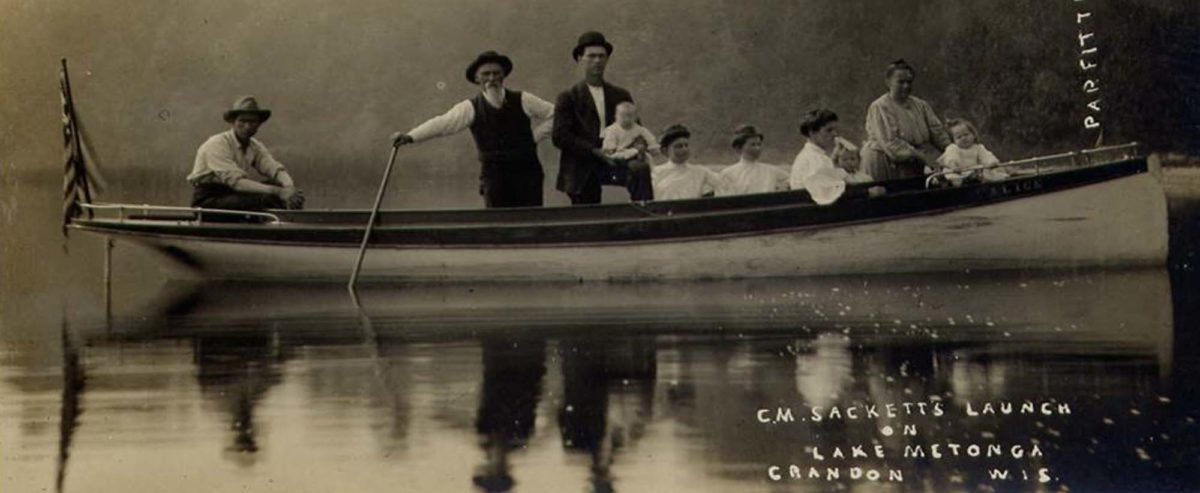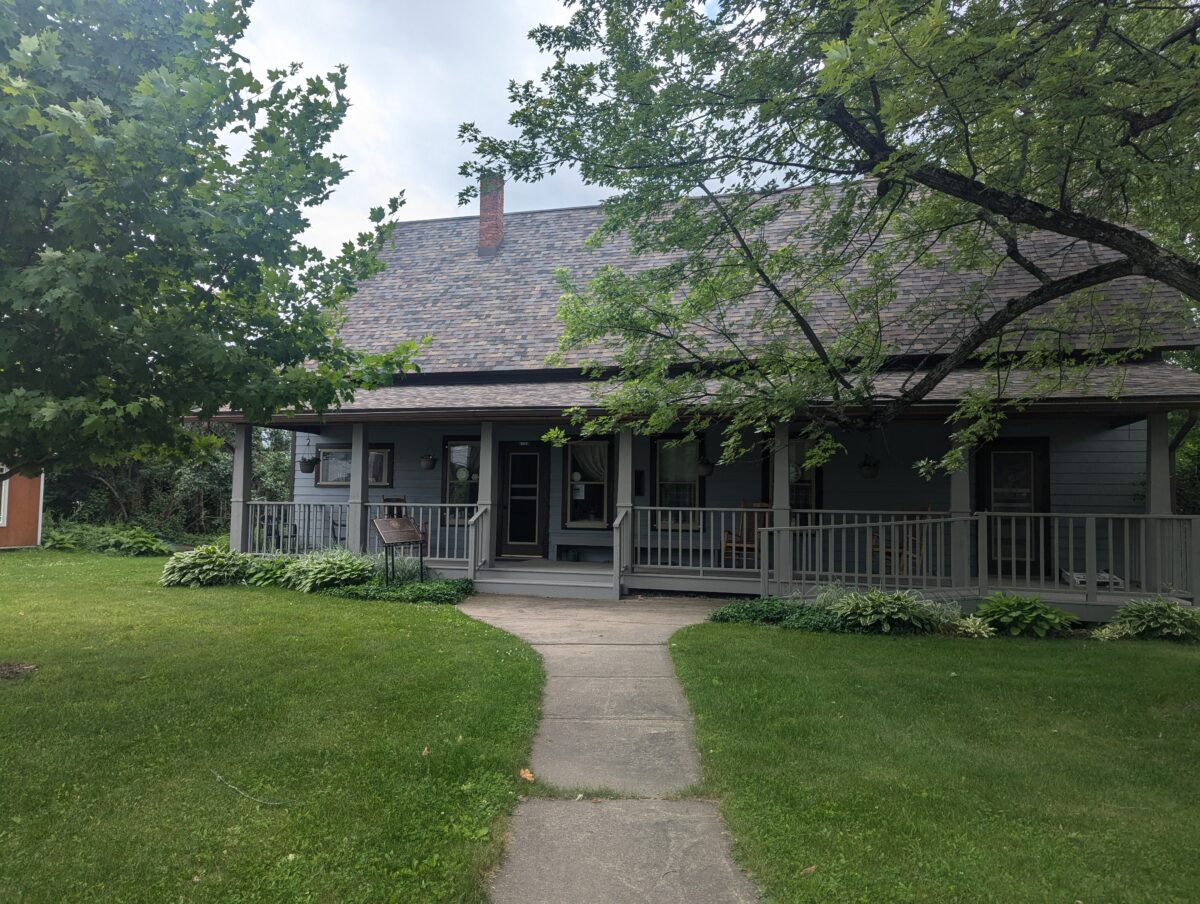The museum is located in what was locally known
as the “Old Carter House.” But it had a
life of its own prior to being bought by Henry Carter in 1920.
The building and property history begins with
Samuel Shaw, the founder of Crandon.
Shaw was the original developer and platted the city. On July 8, 1902, Mr. Shaw and his wife Louise
sold the property where the museum now sits to the Rt. Reverend R.H. Weller,
John Boyd, and G.C. Hauser, trustees of the Protestant Episcopal Church of
Crandon. The property, Lot 5, Block 4,
of Shaw’s First Addition sold for the sum of $175.
By August of 1902, a building was under
construction on the property with the guidance of W.E. Laird, who was also the
contractor for the old high school and numerous other buildings in Crandon.
The first services at the new “Guild Hall” were
held in November of 1902 with the Reverend G. Babcock presiding. It was not consecrated as a church so anyone
who was interested in renting the hall could do so as long as the entertainment
presented was “respectable.”
In May of 1903, the hall was sold for taxes. A reorganization of the church took place and
it became St. Clement’s Mission.
Officers of the mission were:
Wardens H.C. Terry and James L. Walsh, M.D., Treasurer E.C. Paul, and
Clerk G.C. Hauser. There were about 15
families who were supporters and members of the mission. Lack of support caused the failure of the
mission by 1910.
By February of 1912, the property had again
changed hands. A warranty deed was made
between the trustees of the church and E.R. Murphy. The deed was subject to a $600 mortgage. In 1914, Murphy and his wife Marie gave a
warranty deed to the trustees of the church, again subject to a mortgage.
In 1919, the property was sold to the Forest
County Military Association for $550. So,
during its early history, the museum building was used as a community hall
where church services, meetings and dances were held.
In 1920 Henry Carter and his sons Walter, Lester
and Lyle built the building on Lake Avenue which now houses LaFetta
restaurant. (This building is directly
to the east of the museum.) The building
was constructed to house their business which originally involved selling
Fordson tractors. It eventually became a
Ford dealership and then a Chevrolet and GM dealership. It must have seemed logical to the Carters in
1920 that they should also acquire the building directly behind their new business
to remodel into their home. Therefore,
they purchased the building (the current museum) from the Forest County
Military Association.
When the Carters bought the house, the front door
of the building faced west and the back door faced north. When the building was used as a dance hall,
the back door room was where admission was paid and the room next to it, the current
museum office, was the coat room. When the Carters bought the building, they
had it turned so that the front door now faces north and the back door faces
east. It appears that the building was
extended and another door added on the north side. Mr. Carter put in walls, windows, plumbing
and light fixtures. He had stucco put on
the outside which made it reminiscent of the buildings in Pembridge,
Herefordshire, England where he grew up.
(Unfortunately, the stucco deteriorated, was too expensive to repair,
and had to be replaced with wood siding by the Historical Society.)
In 1932, the deed for the property was changed to
show Henry’s wife, Etta Carter, as the owner.
In 1957, after Etta’s death, their daughter and her husband, Marie
Carter Poppy and Ervin Poppy became the owners.
They rented it as a home and one of the families also held church
services there. Marie eventually sold
the property to Henry and Etta’s grandson, Glenn Carter. Glenn rented the building to Carolyn Bailey
who ran a gift/antique/art store there.
Glenn sold the building to the Historical Society in July of 1994.

